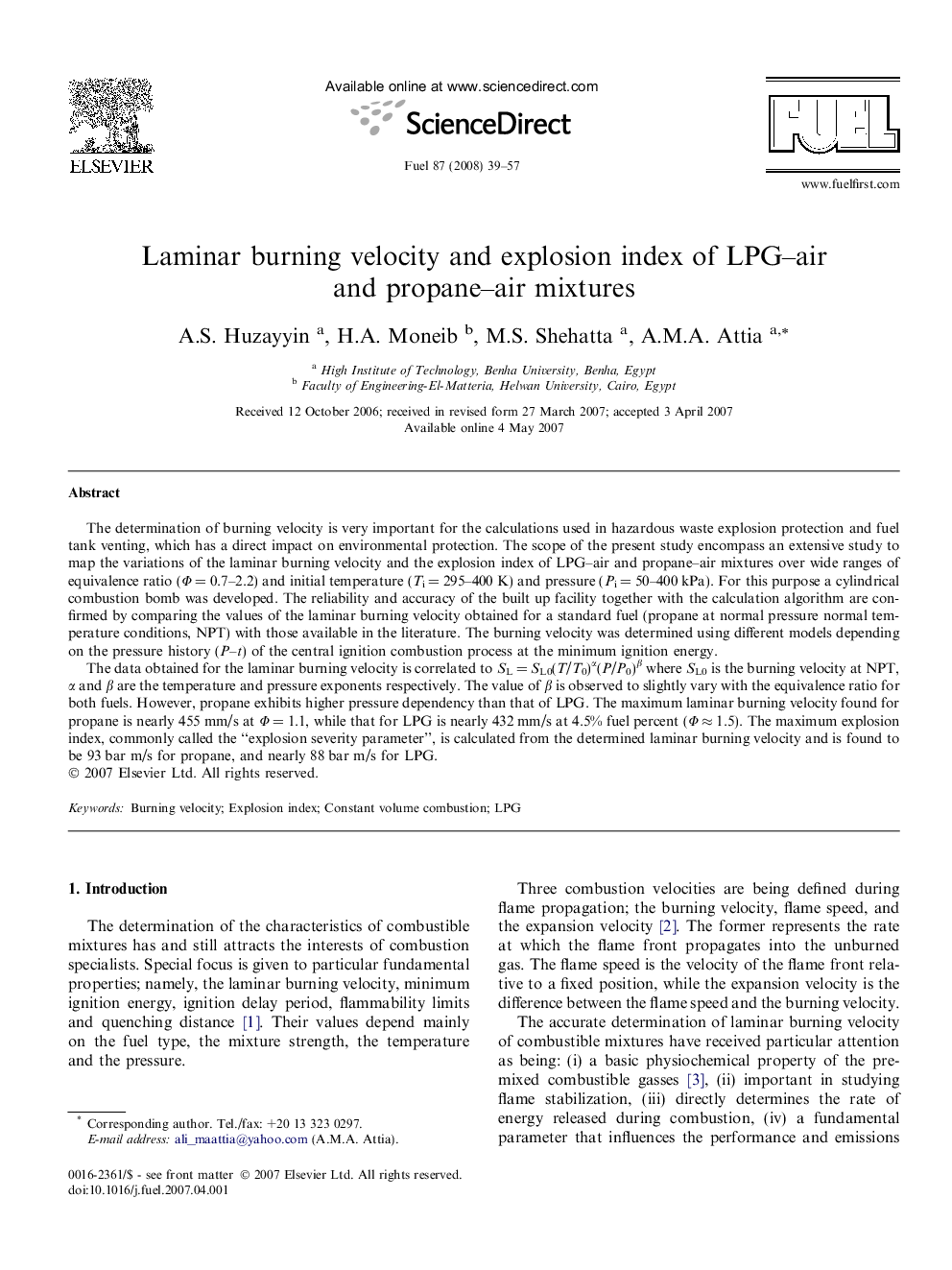| Article ID | Journal | Published Year | Pages | File Type |
|---|---|---|---|---|
| 207941 | Fuel | 2008 | 19 Pages |
The determination of burning velocity is very important for the calculations used in hazardous waste explosion protection and fuel tank venting, which has a direct impact on environmental protection. The scope of the present study encompass an extensive study to map the variations of the laminar burning velocity and the explosion index of LPG–air and propane–air mixtures over wide ranges of equivalence ratio (Φ = 0.7–2.2) and initial temperature (Ti = 295–400 K) and pressure (Pi = 50–400 kPa). For this purpose a cylindrical combustion bomb was developed. The reliability and accuracy of the built up facility together with the calculation algorithm are confirmed by comparing the values of the laminar burning velocity obtained for a standard fuel (propane at normal pressure normal temperature conditions, NPT) with those available in the literature. The burning velocity was determined using different models depending on the pressure history (P–t) of the central ignition combustion process at the minimum ignition energy.The data obtained for the laminar burning velocity is correlated to SL = SL0(T/T0)α(P/P0)β where SL0 is the burning velocity at NPT, α and β are the temperature and pressure exponents respectively. The value of β is observed to slightly vary with the equivalence ratio for both fuels. However, propane exhibits higher pressure dependency than that of LPG. The maximum laminar burning velocity found for propane is nearly 455 mm/s at Φ = 1.1, while that for LPG is nearly 432 mm/s at 4.5% fuel percent (Φ ≈ 1.5). The maximum explosion index, commonly called the “explosion severity parameter”, is calculated from the determined laminar burning velocity and is found to be 93 bar m/s for propane, and nearly 88 bar m/s for LPG.
